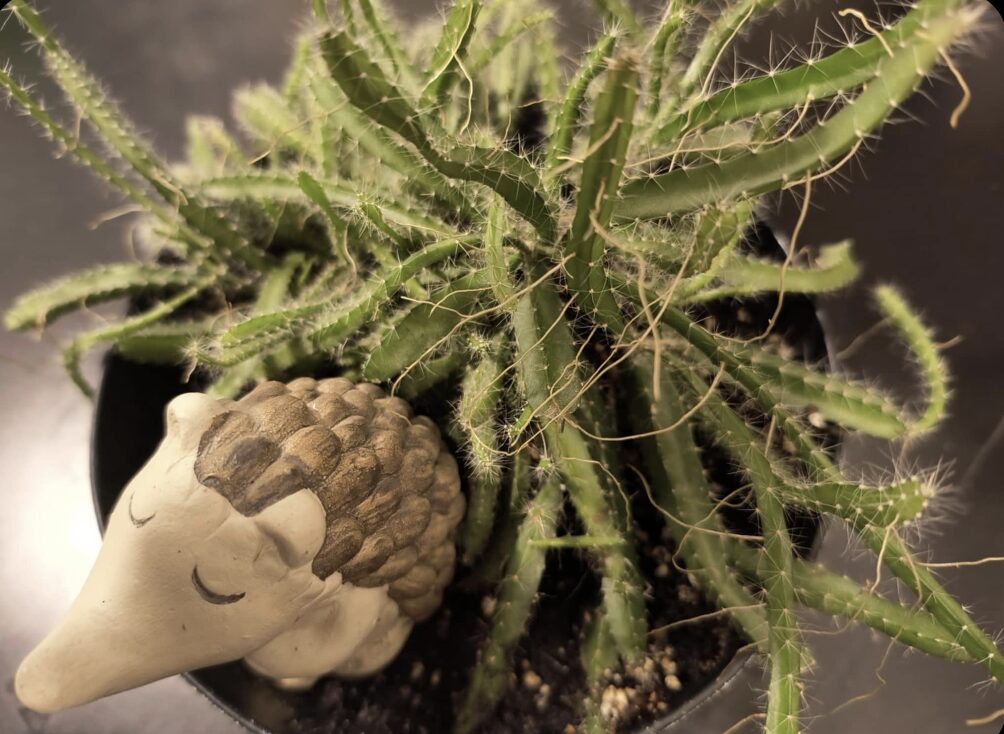Can I cut my Cactus?
Happy August everyone! This month we have a great question from one of our readers. “I have this weird cactus plant, not sure what it is called but it has these long stringy bits on it. Can I cut them off to tidy the plant up or will I damage the cactus by doing that?”
Well, that is a nice Dog tail Cactus! If you look closely, you can see that this plant is showing some aerial roots developing. At this point, you can start propagating by cuttings. Remove these segments of plants that have these aerial roots and stick them in a new pot with potting soil. Water them once in this new pot and watch it grow. You can leave it how it is as well, this is totally up to you!
Now, let’s talk about using hydrogen peroxide on plants. Here are some of my favorite ways for you to use it on your green friends. Remember to keep in mind the different ratios for different applications. It’s important to inspect your plants regularly because this is not something you want to be using all the time, just when you notice specific problems occurring.
- Pest control: Just one spritz of hydrogen peroxide to 1 cup of water is enough to deter outbreaks of Aphids, Spider mites, Whitefly, Mealy Bugs, or Thrips. Be sure to use a spray bottle for this mixture. Any higher concentration can risk burning your plants. It’s always a good idea to test it on one leaf first before applying it to the entire plant. After a week, check again in case any eggs were missed. Then, wipe the leaves with a soft rag.
- Powdery mildew: Mix 1 cup of hydrogen peroxide with 20 cups of water. You can spray or water your plants with this solution and then wipe the leaves with a soft rag.
- Disinfectant: Hydrogen peroxide can be used as a safe disinfectant for your tools, pots, and containers. Just be sure to wipe them down once sprayed. The ratio for this is 1 cup of hydrogen peroxide to 2 cups of water. This is great for preventing the spread of plant disease to other plants while trimming or cutting any plant material.
- Seed treatment: Soak your seeds for 4 hours prior to planting them in a solution of 1 cup hydrogen peroxide to 4 cups water. The peroxide will kill off any unwanted bacteria or fungus that may affect your seeds’ viability, and soaking will help your seeds to sprout faster.
If you have any gardening questions, send them to me at info@theseeker.ca with the subject line “Ask Anna,” and I’ll answer them in next month’s newsletter.





